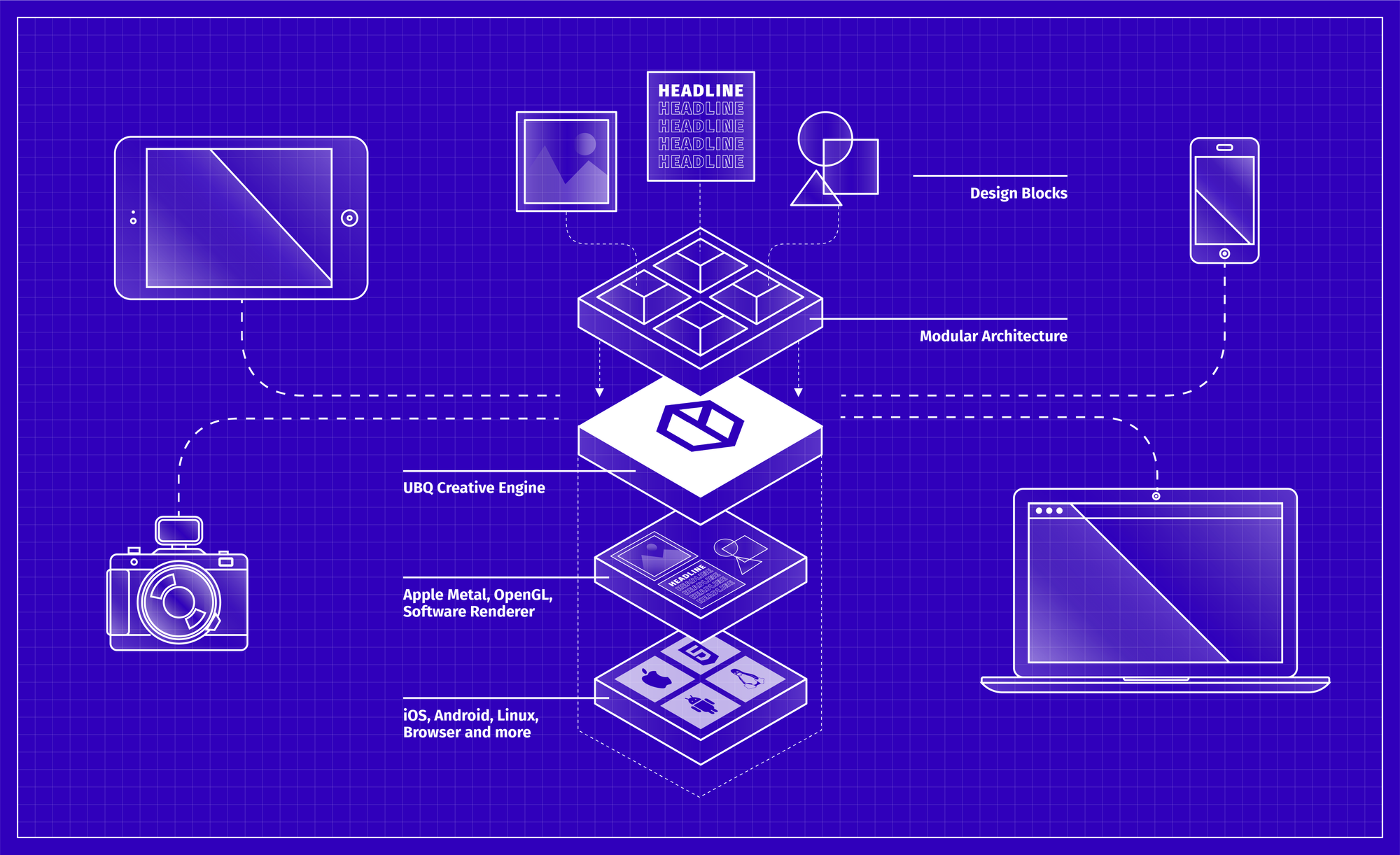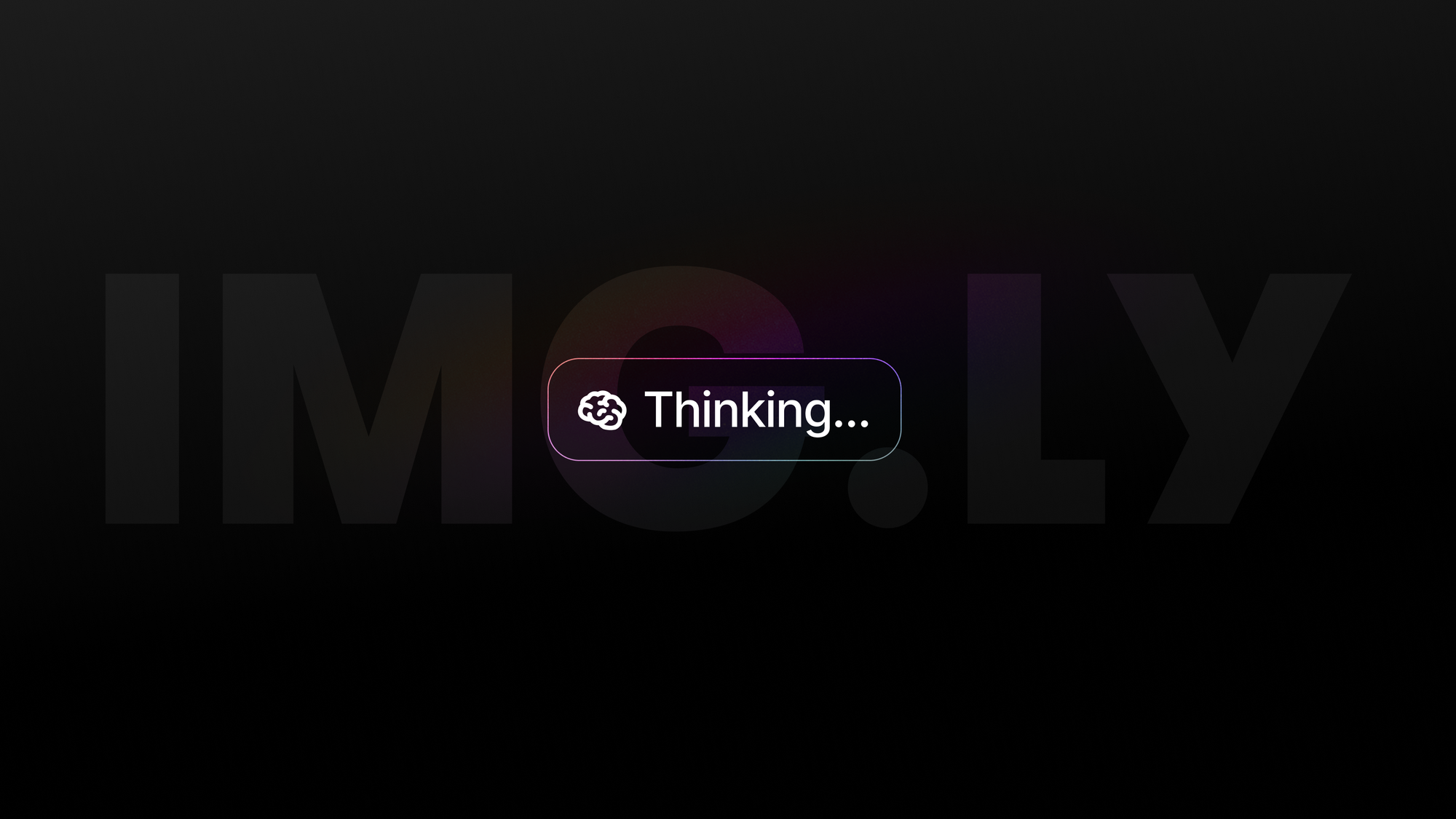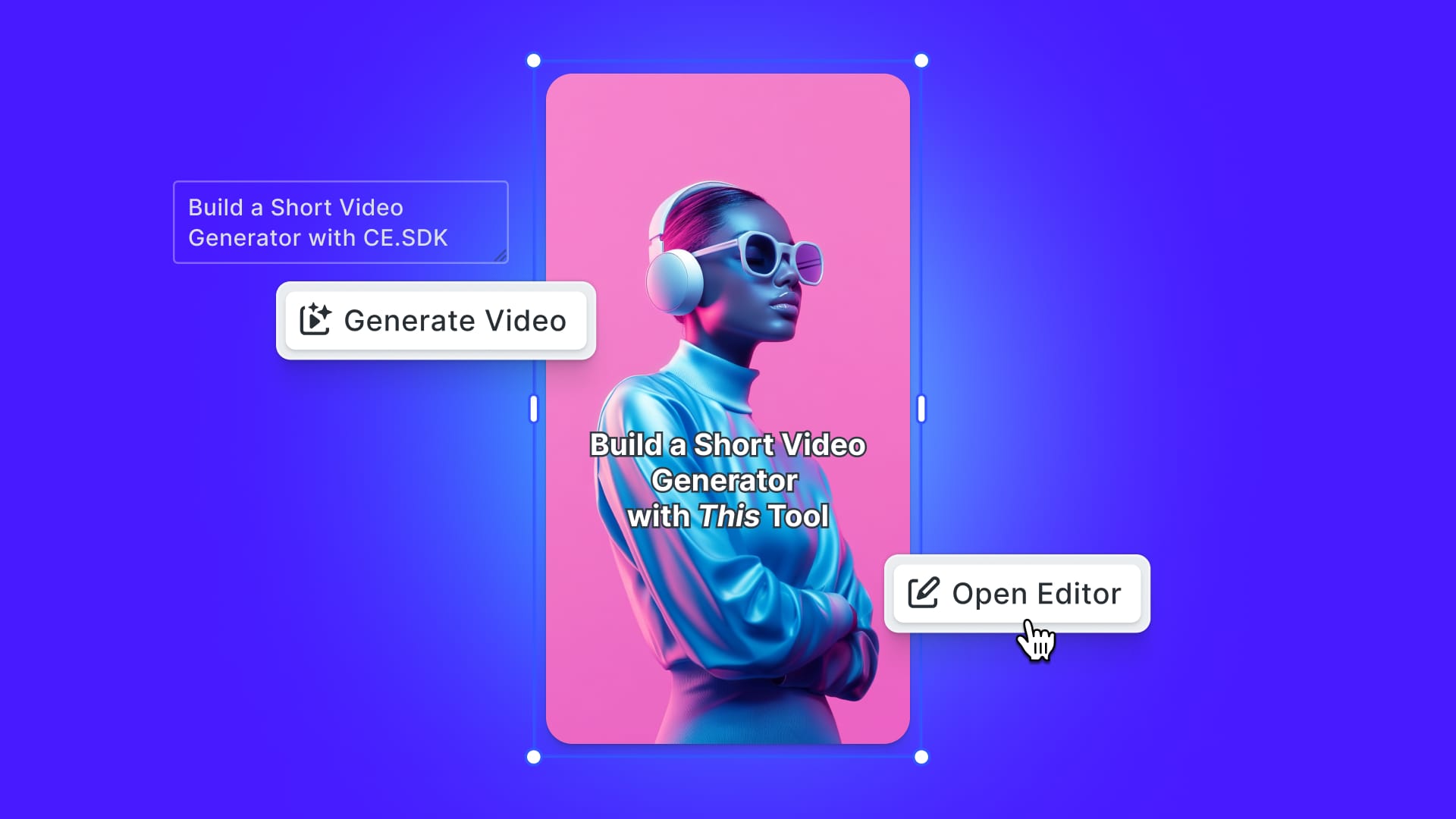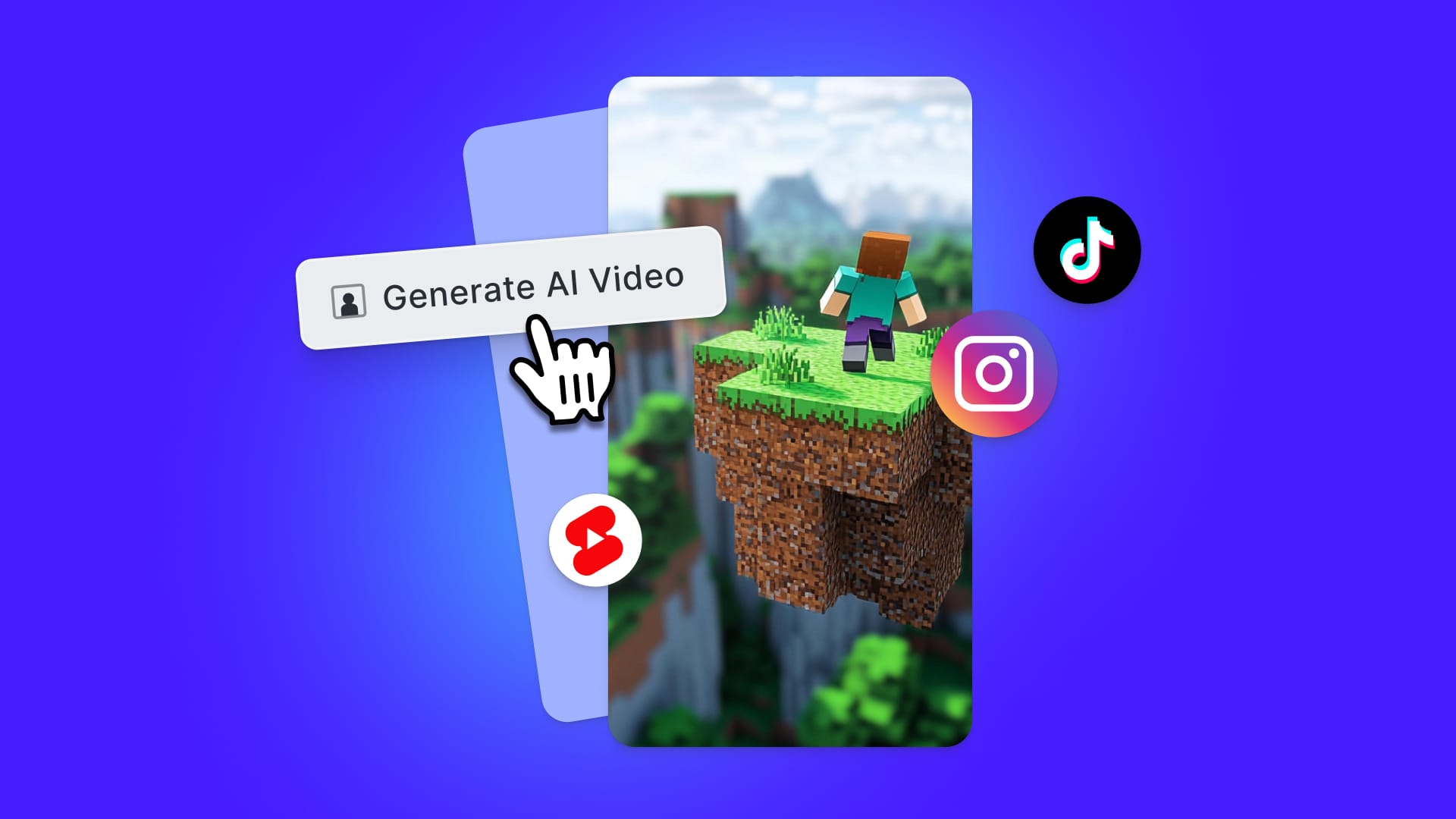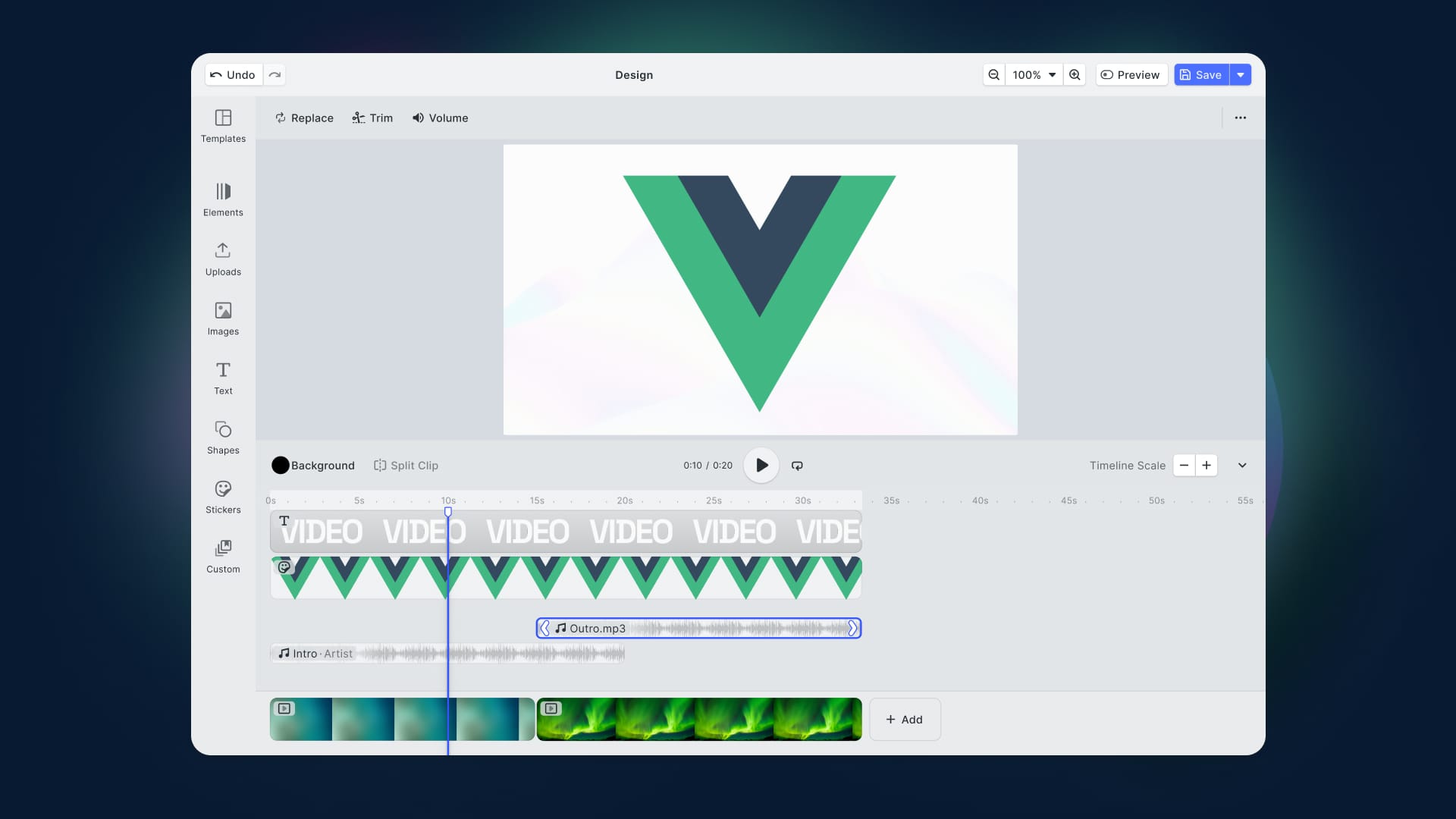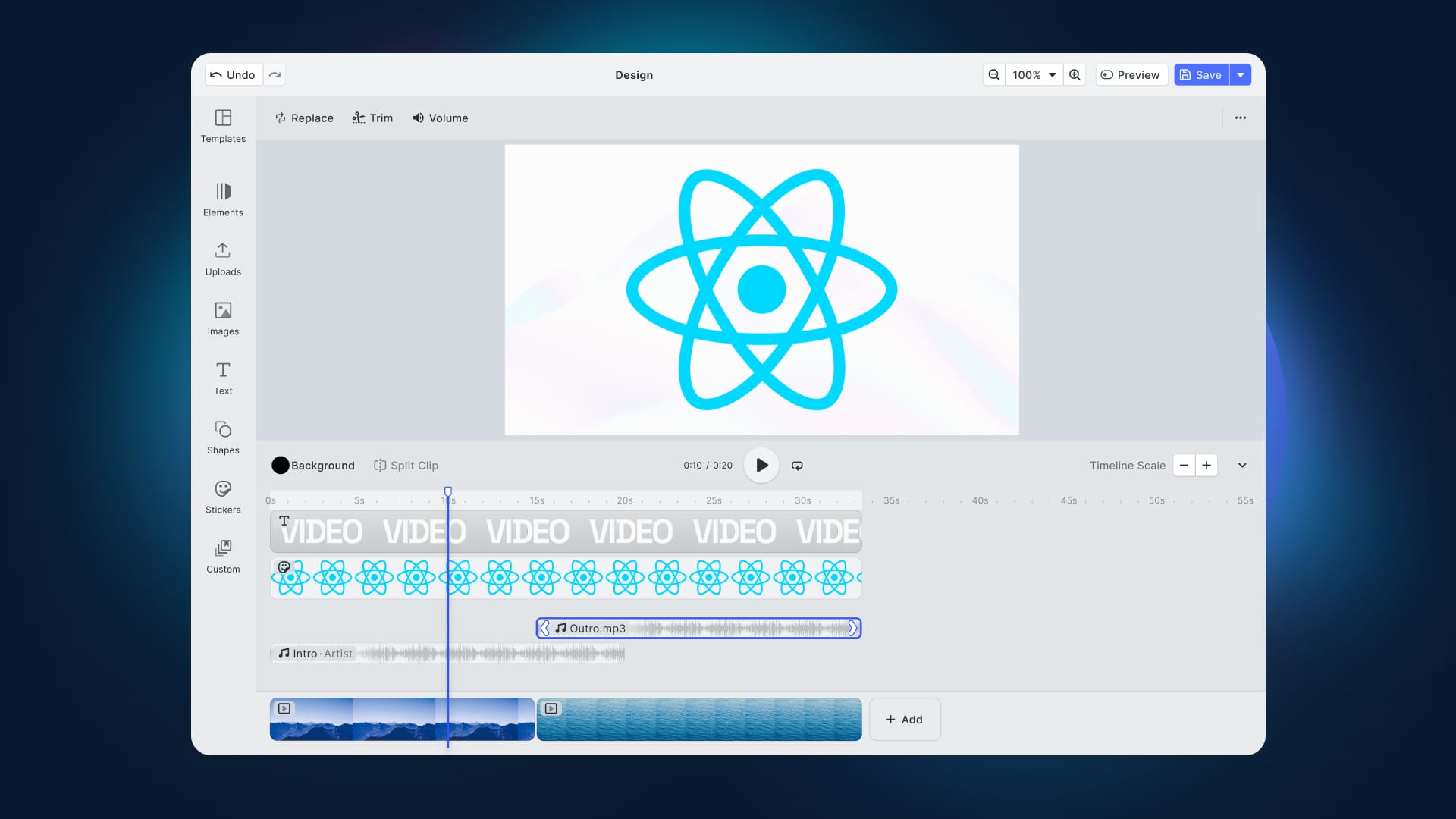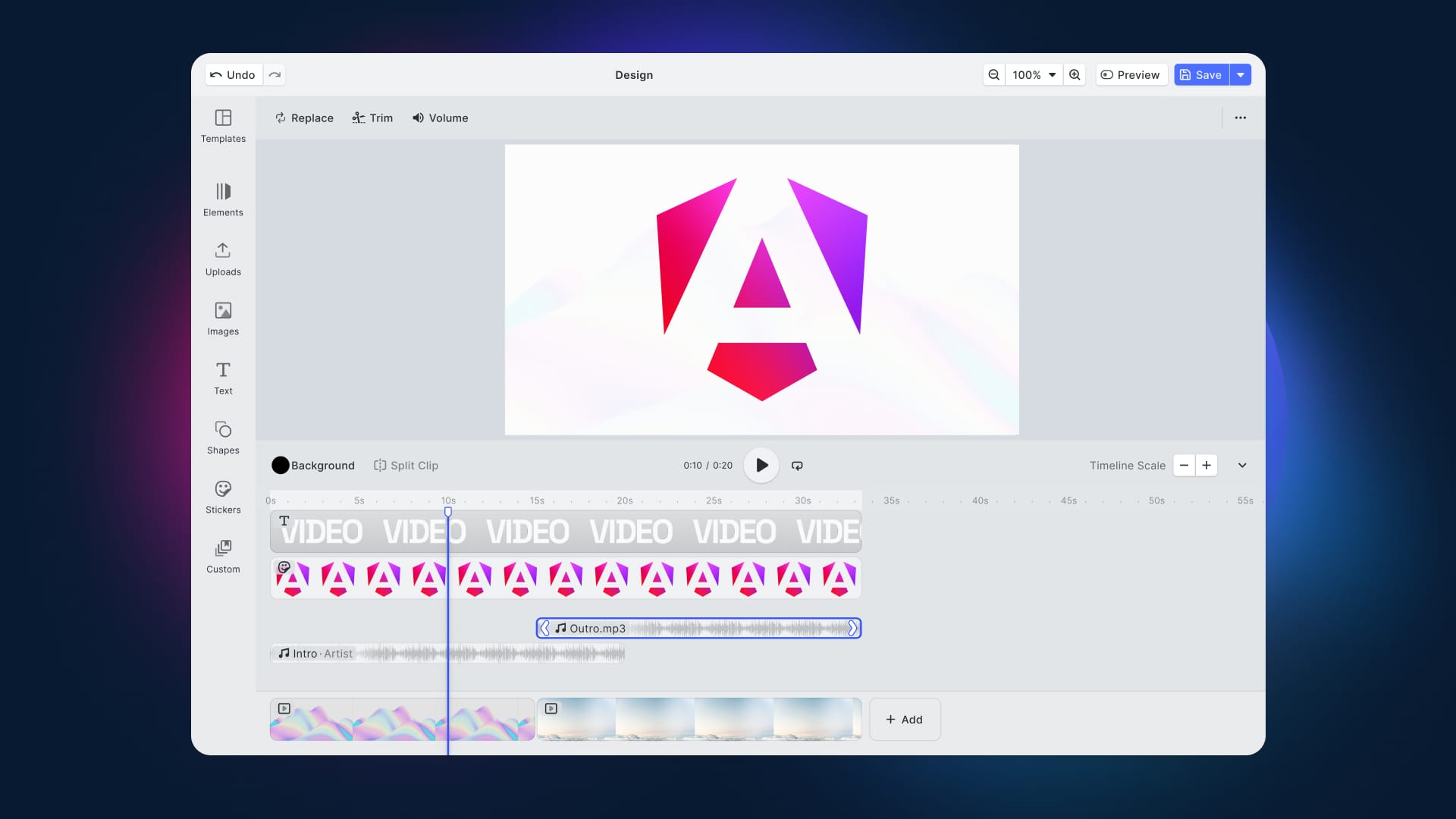Since releasing our first Software Development Kit (SDK) for photo editing in 2015, it quickly found its way into the hands of thousands of application developers. The demand allowed us to ramp up our efforts to expand our SDK to cover more platforms, add features and launch VideoEditor SDK.
At the same time, two very important things happened to us.
First of all, we got experienced in building rendering engines, while learning in-depth about the requirements of processing photos for professional and semi-professional use-cases, on every platform. Our team leveled up big time, to a degree where we are confident there aren't many teams with such a domain-specific expertise.
Secondly, we gained critical insights into the visual creation process across many different industries, ranging from print services, social networks to marketing tools. In these processes, photo editing is only one part of the creative flow. There are topics like layouting, animation, generative design and many more, which go beyond the mere editing of an image, but are still essential to the business case.
Our vision is to fill the obvious gap, providing a holistic solution that allows users to map entire creative flows into a tool. By leveraging our technology our customers will become a lot faster and more competitive in their markets.
Six months ago, we decided to build the foundation for this vision and kicked off the development of UBQ, an engine empowering a new generation of tools for creativity.
It's time to shed some light on our creative engine.
What is a Creative Engine?
Before we go forward, let's establish what we mean by a creative engine. In general, an engine is a platform that allows developers to create tools that support creators to perform specific tasks such as editing photos, creating visual appealing posters, or social media posts. From our perspective, a creative engine will ease the development of design tools for various niches and as such it must be easily adaptable for different usage and user requirements.
To ensure that we don't have to reinvent the wheel for each creative tool, a creative engine provides building blocks especially targeted to creative output. Some examples for these are:
- High-quality image adjustment, editing, filtering, and manipulation.
- Automated layouting of design elements on a canvas.
- High-quality text rendering and layout algorithms.
- Support for various industry-standard assets, image, and video formats.
However, these are only some of the basic features – there are far more advanced things that a creative engine can provide.
On the one hand, this may include scripting tools to ease the generation of generative art or automation for tedious design tasks via automated image segmentation.
On the other hand, there are also tools that not only help the individual creator but ease the cooperation and collaboration between multiple creators and editors. The details may vary, but it can be as simple as defining formats to exchange assets and designs between creators or even allow the simultaneous editing of their creation.
Introducing the UBQ Creative Engine
With UBQ we strive to lay the groundwork for modern visual and communication design.
Believing that these days, a good design tool has to be there for you every step of the way – it has to be ubiquitous. Let us explain what this means for us.
Usable on any Platform
In this sense, we want it to be easily accessible to everyone, and as such the UBQ stands for its availability across multiple platforms. It is conceptionally web- and mobile-first but is also available for classic operating systems such as macOS, Linux, and Windows, while being easily portable across various platforms.
Unified Rendering, Generative, and Inference Engine
While our previous products focused on processing a single image or video, our scope is greatly extended with UBQ. Besides being able to process multiple images, with effects such as filters, adjustments, and so forth, in UBQ we generalized images to a concept we call Design Blocks. As such, static images are not the only source of data. It can be anything, even code that generates the visual input. In turn allowing that generative patterns and complex generative art is processed directly in the engine.
We put a lot of work in the last years into modern tools for automation to help creators get rid of time-consuming tasks such as image segmentation, color adjustments, and many others. Our foundation for this stems from modern machine learning and neural network advancements. As such UBQ supports executing neural networks and inferring information. Thus basically allowing any neural network to be part of a design generalized in what we call Compute Blocks.
Collaboration – Interact in Realtime with other Creators
The cooperation and collaboration between multiple creators are dear to our hearts. Therefore, we believe that creation is not only the effort of an individual but of many.
UBQ will enable multiple creators to work together. Thus, allowing a design team to work together, share thoughts and assets instantly. Consequently, this constributes in accelerating their workflows and enriching their creative process.
All that is reinforced due to the multiplayer approach to design as well as reusable design elements.
Creators shall be enabled to work together locally as well as remotely and interact on the same design at the same time.
Cooperation – Ease Exchange of Designs with your Peers
Besides the collaborative aspect, UBQ is built around the interaction of creators and non-designers – which we refer to as editors.
Editors will be enabled to take existing designs and adapt it to their needs, by either just giving instant feedback to the creators, changing color palettes to fit the needs of their corporate design guidelines or changing images and text passages to make a design appealing to their audience.
Design Blocks – Smart and Reusable Design Element
Another important design decision is the ability to exchange and reuse design elements between several projects. Therefore, UBQs foundation is built around the concept of smart design elements that we call blocks.
Blocks are reusable design elements that encapsulate complex and tedious design tasks.
They currently come in two flavors, Design and Compute Blocks ranging from simple predefined image adjustments settings to automated image segmentation as well as predefined adaptable design elements.

From our point of view, creators should not have to spend their time with the recreation of preexisting designs. They should not have to watch tutorials just to get to the same output as someone else before. In UBQ, these design blocks are the core foundation for building adaptable and interchangeable designs.
Design blocks respond to the available space, adapting their content accordingly and may include complex logical rules or just a combination of assets. UBQ has all batteries included, providing a rich library of predefined blocks. By design, blocks can easily be built from a combination of other blocks or by using a scripting language similar to processing or p5.js to allow even generative and parametric design.
Final Words
As of April 2020, we are working on the UBQ creative engine for almost half a year now incorporating knowledge from 5+ years developing our SDKs.
We believe we can make an impact on how designs and design-tools are created, adapted and distributed. We are interested in your feedback and open to discussions, also we are looking for people who want to get involved as team members, early adopters or just want to play with it. Expect some demos during the end of summer showcasing what the UBQ engine is capable of.
Soon, we will get back to you with more exciting news.
Stay tuned!
We're hiring!
Oh, and by the way, we're hiring a Senior Frontend Developer at img.ly to reinforce our team and help shaping the frontend of our new design tool. Check out the job here and drop us a line, if you are interested.


